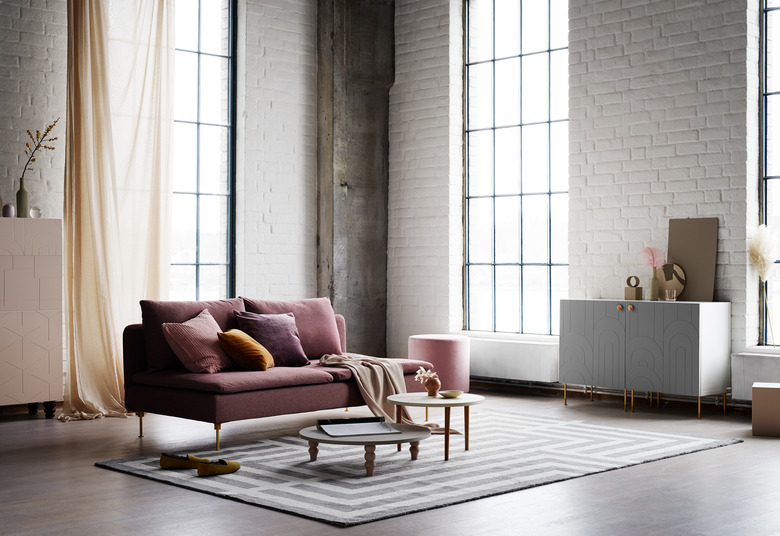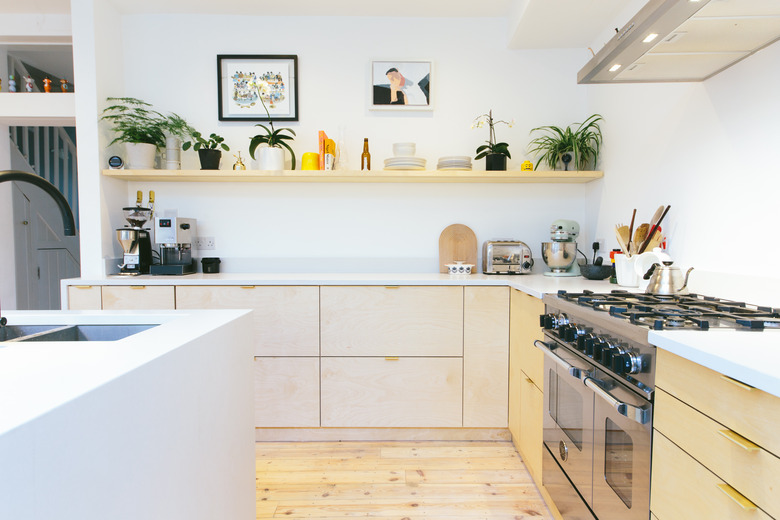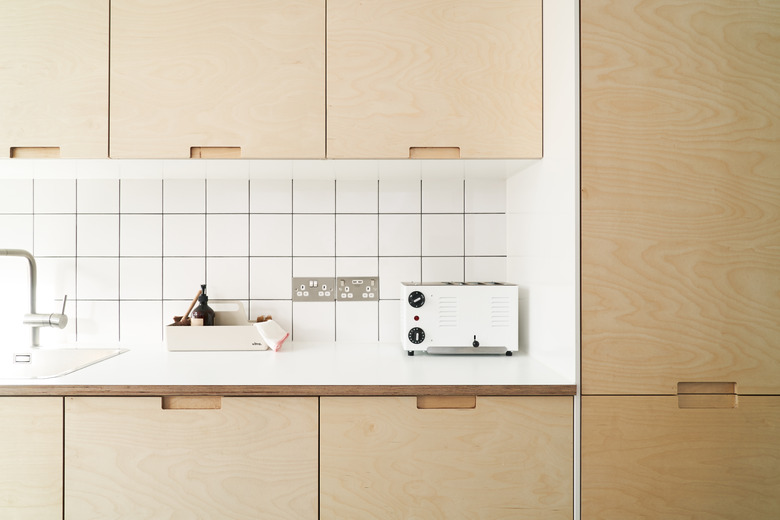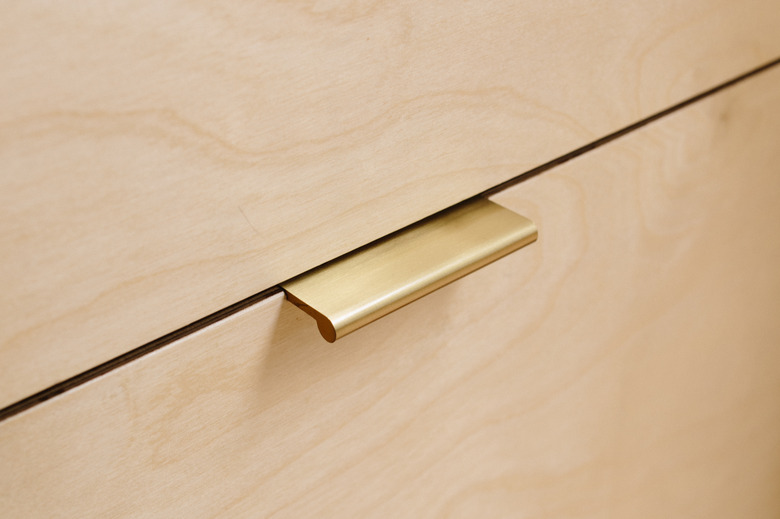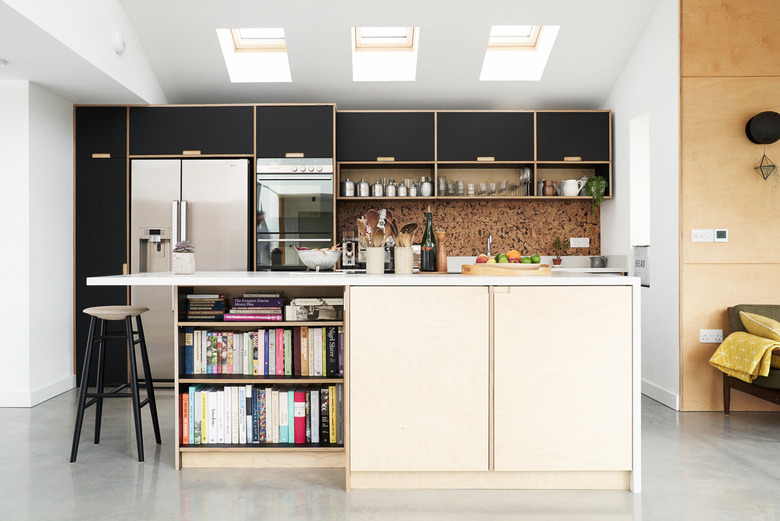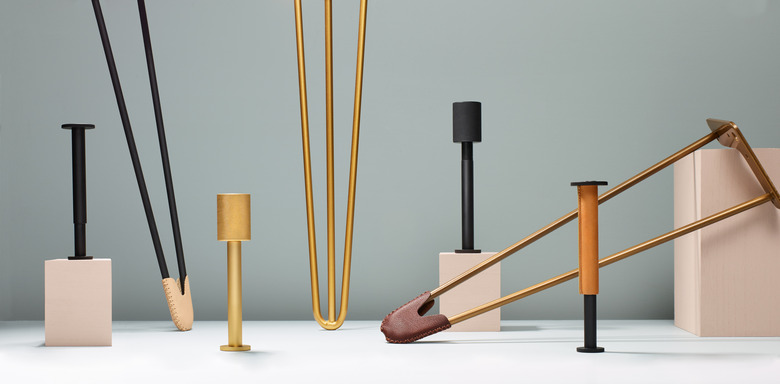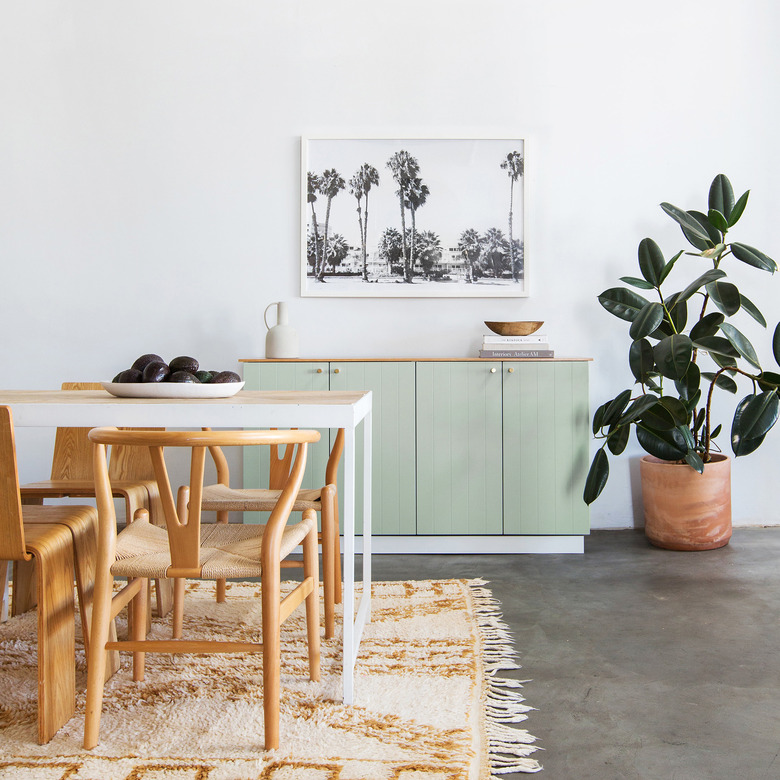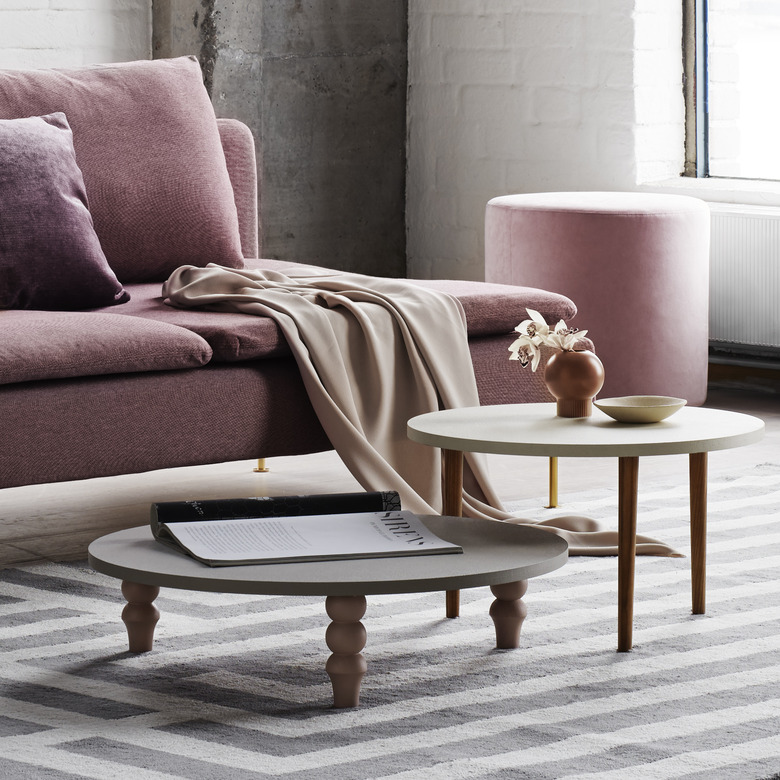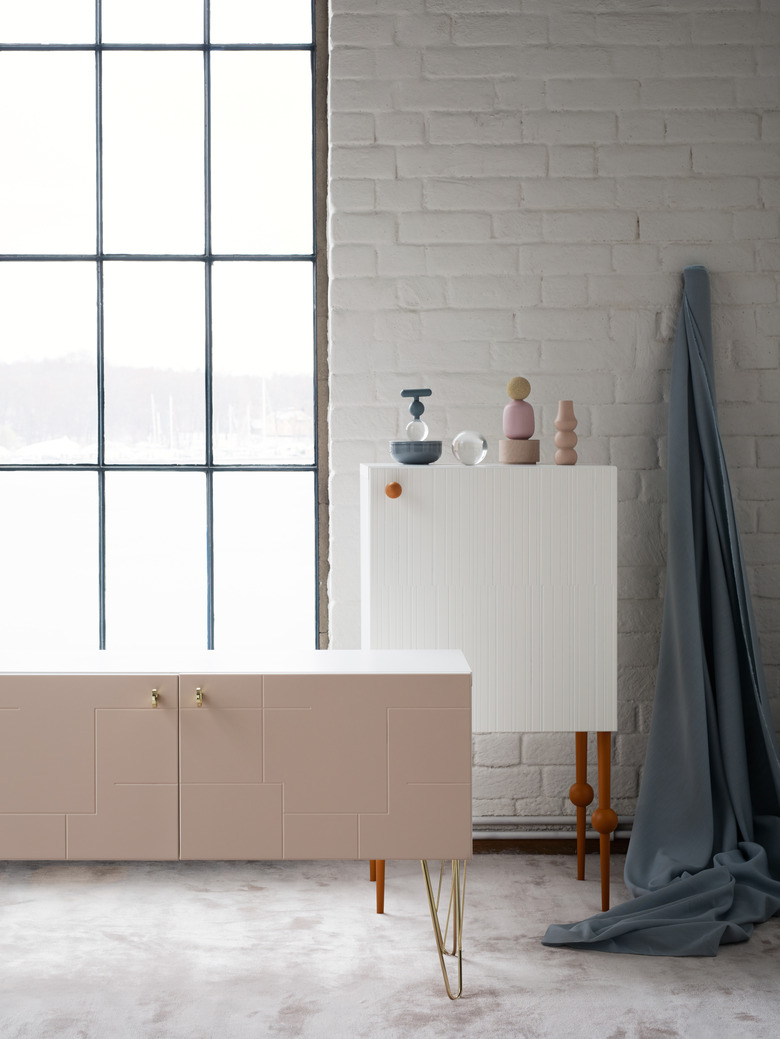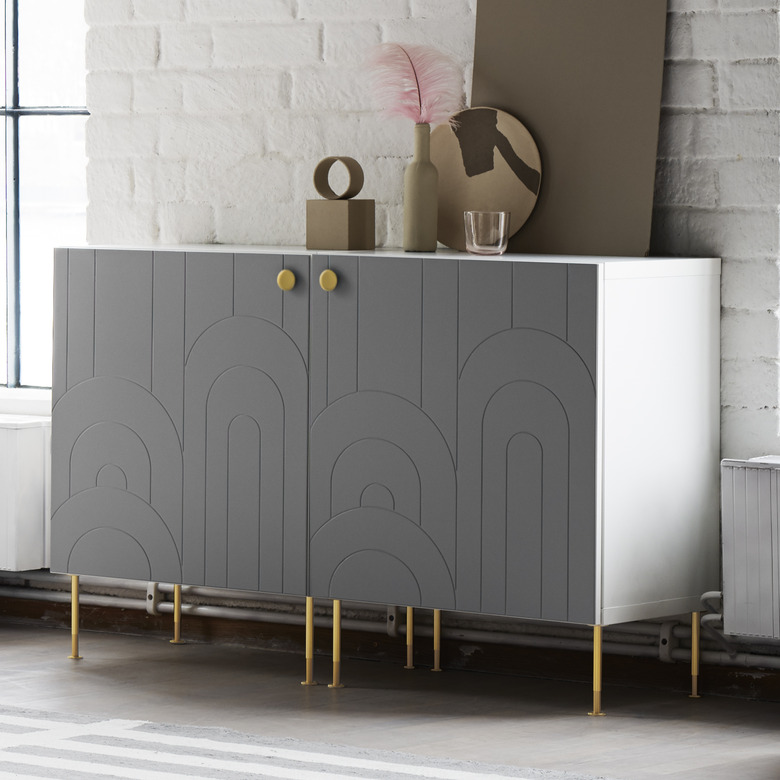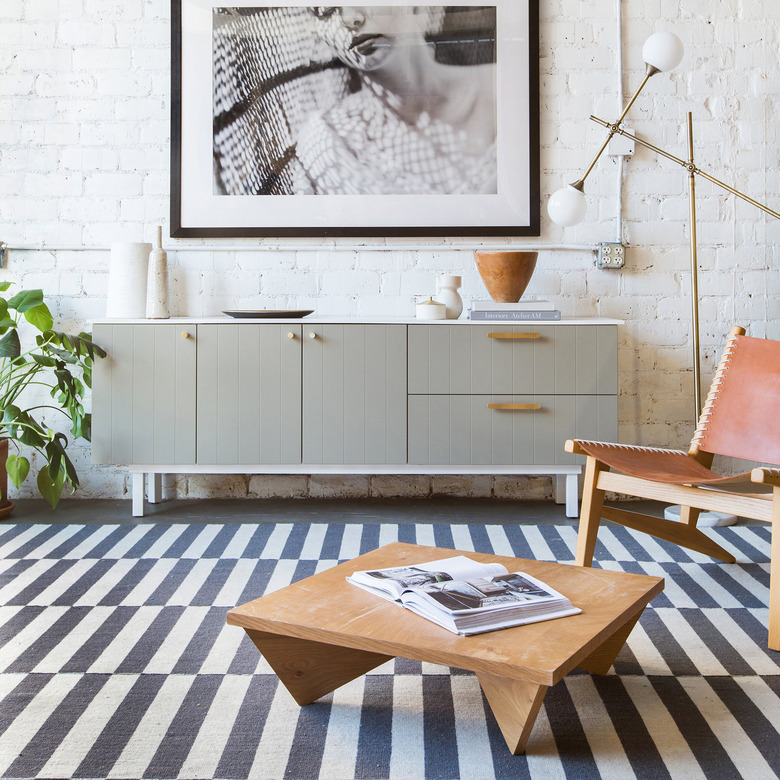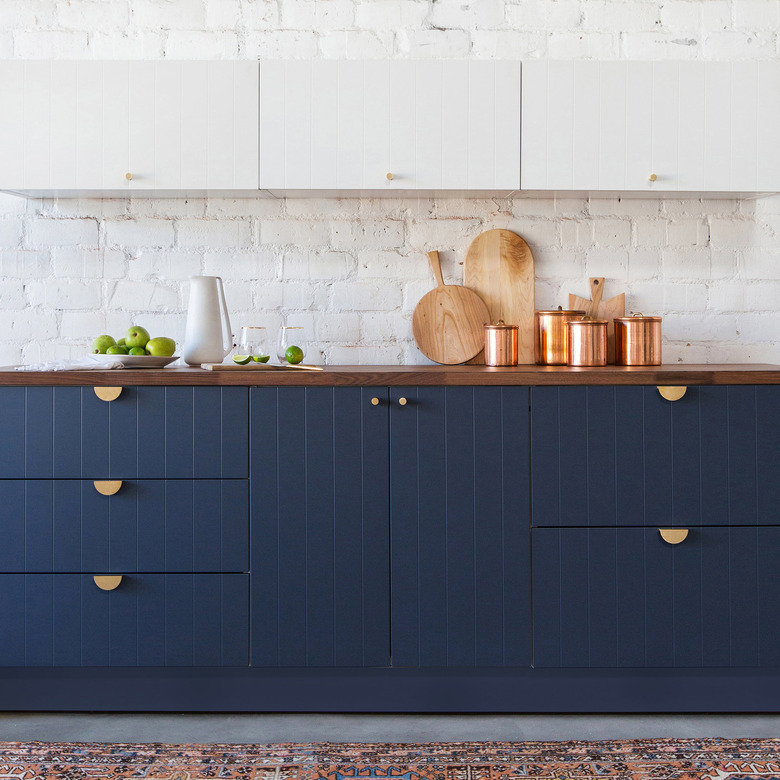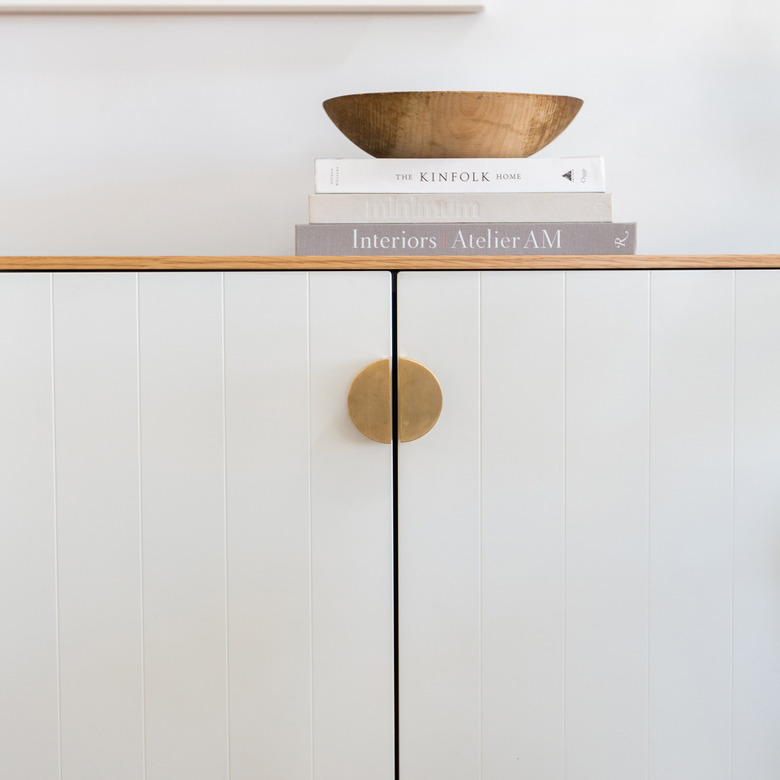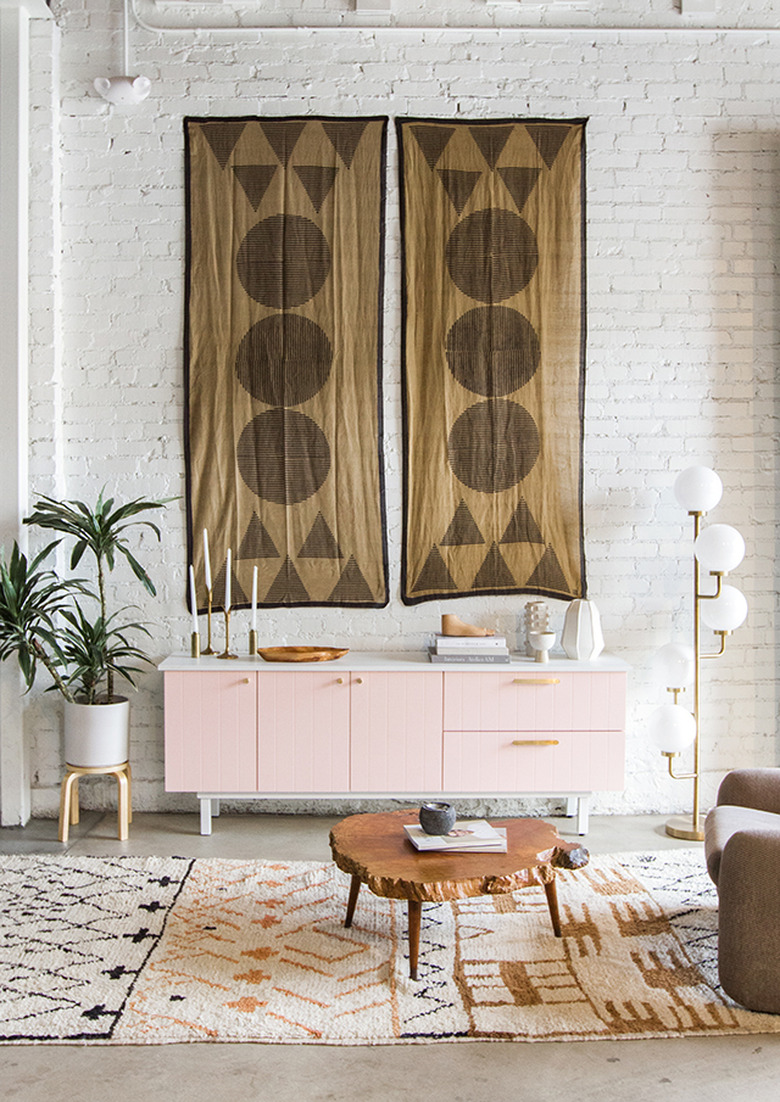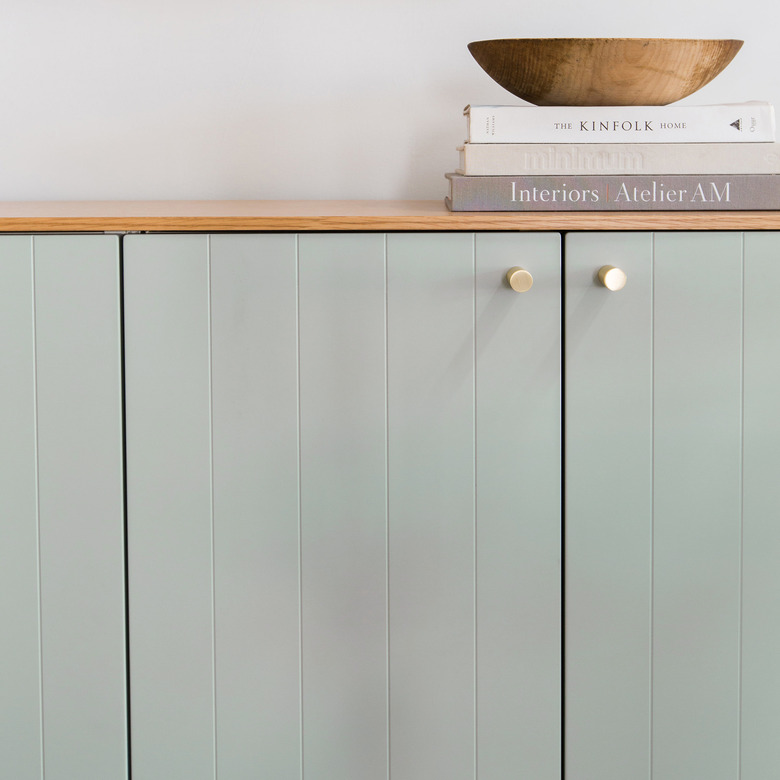Ikea Hacking Enters A New Era Of Aspirational Living
Ikea "hacks" are among the internet's oldest and most steadfast content trends. There are nearly 25 million Google search results for the term — a catchall adopted from the notion of computer hacking — which refers to modifying, repurposing, and customizing the Swedish retailer's seriously affordable, ready-to-assemble, minimalist home furnishings and accessories.
Ikea has been around a lot longer than the internet — it was founded in 1943, and its first U.S. store opened in 1985 — it only became one of the world's largest furniture retailers in 2008 following a decade of strategic investments and further cost-cutting. At the same time, the internet was exploding, social media was on the rise, and together, aspirational consumerism began to permeate nearly every facet of our day-to-day lives, including our outward appearances. On a certain level, you are your stuff; the stuff you don't have but covet offers a glimpse at who you could or might like to be. Ikea remains relatively unchallenged in its ability to offer an affordable costume change for your domaine. The sparse simplicity of its designs reflects a popular Scandinavian aesthetic, but Ikea also presents a blank canvas upon which creativity and ingenuity can thrive.
The most satisfying Ikea hacks use products in ways the retailer did not necessarily intend. Take, for example, Ikea's Luroy wooden slatted bed base. For just $9.99, you get 14 slats of layer-glued birch made to fit their bed frames. But hang the slats vertically from a wall, add a bunch of double-ended hooks, and suddenly you have a way to organize and display everything from scarves and towels, to cooking utensils and potted herbs. Or, there are DIYs that preserve the piece's purpose, but elevate the design — like using the tray of the Gladom table to create a terrazzo tabletop.
Sometimes these "hacks," a term that has loosened over the years, really only involve a few surface tweaks — many of Ikea's wood furniture pieces are available unstained, so a couple coats of bright paint and new hardware can result in dramatic transformations. Like the quiet, spectacled nerd in so many teen movies, every plain Malm dresser and unassuming Billy bookcase can be made over into a bespoke beauty you have to see to believe. There are thousands of these makeovers to marvel over online: The before-and-after pictures are what Pinterest was made for.
Plykea offers bespoke plywood doors, drawer fronts, worktops, and cover panels for Ikea kitchen cabinets.
And, over the years, Ikea hacking has become a big business, with numerous companies selling products specifically made to fit the retailer's wares. There's Superfront, a Swedish company that sells its own panels, handles, and legs; and U.K.-based Plykea, which focuses on bespoke birch plywood fronts for Ikea kitchen cabinets. (Unfortunately, neither of these companies currently ship to the U.S.)
Kitchens by Plykea.
California-based company Semihandmade had the decor world buzzing last year when it teamed up with designer Sarah Sherman Samuel to create a collab that channels her Insta-worthy style. Norse Interiors offers fronts, legs, and hardware that further elevate the Scandi-chic vibe on pieces. Panyl (based in Brooklyn) has put its own refined spin on contact paper, with sticky vinyl "furniture wrap" in a variety of hues and wood grains. And the Swedish company Bemz is one of several players making stylish slipcovers in an array of colors, prints, and fabrics customized to fit Ikea couches and chairs. All of these businesses offer some degree of customization so that their wares can be used with non-Ikea furniture as well.
While Ikea customization companies have become a veritable micro-industry, most were created out of personal desire. Take, for example, Sweden's Prettypegs, founded in 2012, which focuses on selling legs for chairs, tables, and other Ikea furniture in dozens of styles.
Founded in Sweden in 2012, Prettypegs's concept is simple — furniture accessories that add personality and extend the life of your Ikea furniture.
"We couldn't find any nice couches in our price range with nice legs," co-founder and marketing manager Jana Cagin told Hunker about how she and her husband, Mikael, came up with the idea for Prettypegs. "We thought the couches at Ikea were quite stylish and affordable, with a clean design, but the legs just screamed mass production. And since we both believe a unique accessory can work wonders to bring an old outfit back to life, we thought the same goes with furniture. That's how we came up with our tagline: 'Shoe your furniture!'"
With a few clicks, a spare hour, and a screwdriver, a plain Besta two-door cabinet can be transformed into a nearly unrecognizable credenza. Prettypegs is not exactly cheap, however. At minimum, a set of four short legs costs $49; knobs start at $7 a piece; and front layers range from $26 to $43 per panel. So you can easily walk into a territory where your store-bought "hack" may cost more than the actual Ikea foundation, which seems counterintuitive.
That could be why the kitchen seems to be such a popular place to start — the way you buy cabinets at Ikea allows you to build them yourselves, so you're not actually paying for extra bits that you need to swap out. John McDonald, founder of Semihandmade, explains: "With kitchens, it's different. Doors and panels — everything on the outside that really does define your space — are totally optional. You can buy the cabinet boxes and hardware from Ikea, then go to Semihandmade or whomever for the fronts (or even make them yourself!)." McDonald points to the "generosity" of Ikea's designs that consistently provide consumers with an expanding range of choices; and it's those choices that allow Semihandmade to thrive. "[Our customers] love Ikea's well-made, reasonably priced kitchens," he says. "They just don't want people to know they have one."
Semihandmade is one of the more popular U.S.-based Ikea customization companies; they recently launched a collection with designer Sarah Sherman Samuel, whose Instagram following has elevated her to cult status.
One of the considerable downsides to Ikea's affordability is its disposability, which, thanks to the company's success, has had an impact on the home goods market as a whole. Ikea has shifted the general perception of what furniture should cost, and in turn, how much people are willing to pay for it, and how comfortable they feel about throwing it out. Mass production has kept costs low for consumers, but it's been at the expense of the environment. A key component of Prettypegs's mission is to encourage sustainability by urging customers to make aesthetic improvements to furniture they already own.
Sofas, cabinets, and tables are transformed by Prettypegs's add-ons.
"We are big supporters of upcycling," Cagin says. She estimates that Prettypegs's customer base — mostly women between 25 and 44, living in Scandinavia and American cities like New York and Los Angeles — is evenly split in using their products to hack old and new furniture. "We try to inspire our followers and customers to upcycle old furniture instead of buying new. But even if people do use our products for new furniture, we are convinced that by adding a bit of TLC, they will end up keeping it for a longer period of time — so we hope to change people's behavior."
Possibly the most unique of the Ikea customizing bunch is the New England company O'verlays, which sells pre-cut fretwork embellishments. O'verlays has been particularly successful in the U.S., where it remains one of the relatively few American-founded businesses focused on Ikea hacks. Unlike its Scandinavian counterparts, which tend to share Ikea's minimalist aesthetic, O'verlays are purely ornamental, and dramatic even in small doses. Cheryle Rhuda, an interior decorator, started the business around 2010 after she and her partner Danika Herrick transformed an "ugly" Pax wardrobe for a client with fretwork they found at a flea market.
"Because of how great it came out, another client said, 'Well I want that!'" Rhuda says. "So we tried to reinvent it for them, but it was going to cost more than it would be to have it already made that way. So, we decided, you know what, let's take matters into our own hands. We had an engineer help us put together a lightweight material that was paintable, that was easy to cut, where we could do any design we wanted with less sanding, and really make it easy on us. We had been blogging at that point anyway, so we introduced it to our blog friends, and it just it took off."
O'verlays come in dozens of decorative designs organized by "accent type," including panels, strips and corners, frames for mirrors, and kits specifically tailored for Ikea's product lines. They also do custom orders and sizing, but since they're made out of lightweight PVC, they can be easily trimmed at home. All of the fretwork is white, which can be left as-is or painted, and then applied with many forms of adhesive.
So what does Ikea think about customers "hacking" their furniture? The company was resistant at first; in 2014, they sent a cease-and-desist letter to the owners of the website IkeaHackers.net, citing infringement of intellectual property rights. The site was temporarily taken down, but after an online backlash, the company relented, seemingly recognizing that hacking Ikea products still involves purchasing Ikea furniture. The following year, the company announced a plan to release their own "hacking kits," but for some reason the idea never made it to market.
Semihandmade takes Ikea's frameworks and elevates it with custom cabinet fronts.
Ikea has incorporated scaleable customization options and services online and in stores, both for major projects like kitchen remodeling, and individual pieces of furniture that have mix-and-matchable components. They also sell smaller decorative parts — like door knobs, drawer pulls, cabinet handles, and table legs — individually, so customers can feel like they're tailoring a purchase to their own personal tastes.
Otherwise, Ikea seems to understand that outside hacking and customizing can only be good for its business, even if others are making money off it, too.
"Ikea seems to be fine with it," says Rhuda. "It gives them more business! As long as it doesn't cause any harm where someone could get hurt, I don't think it's a problem for them." Still, most customization companies are careful in their "about" or "FAQ" sections of their sites, clearly spelling out their non-association with Ikea.
Just as blogging and social media fueled the Ikea hacking trend as a whole, the endorsement of decor and lifestyle influencers has been integral to marketing and promotion for companies like Prettypegs, O'verlays, Bemz, and Panyl. These influencers represent the ideal within the target demographic — women in their twenties, thirties, and forties, who consider their homes to be extensions of themselves and their personal style.
Thanks to the inside access of apps like Instagram, aspirational living is at its peak. People are more design-minded than ever, but up until now, the market just hasn't catered to the financial constraints of the average American. After all, all those stunning kitchens you've saved on Pinterest have seemed like pipe dreams. But it's companies like Semihandmade and Plykea that have broken into a new category of accessible design. One that — while not the most affordable — still allows people to give their homes makeovers that actually look professional.
The movement is only just getting started — and we're here for it.
1. Credits
Words: Amelia McDonell-Parry
Photos courtesy of: Prettypegs, Plykea, Semihandmade
